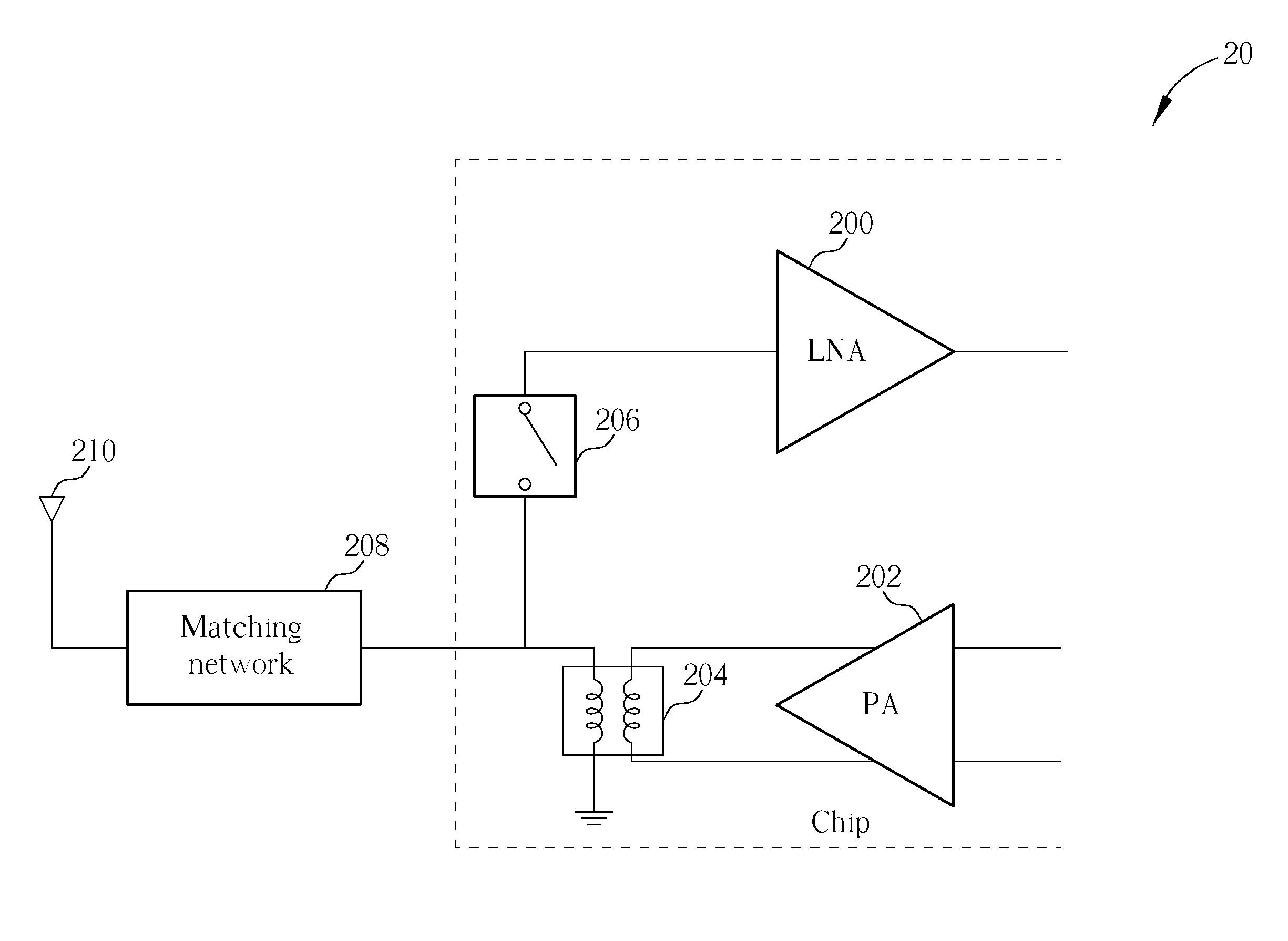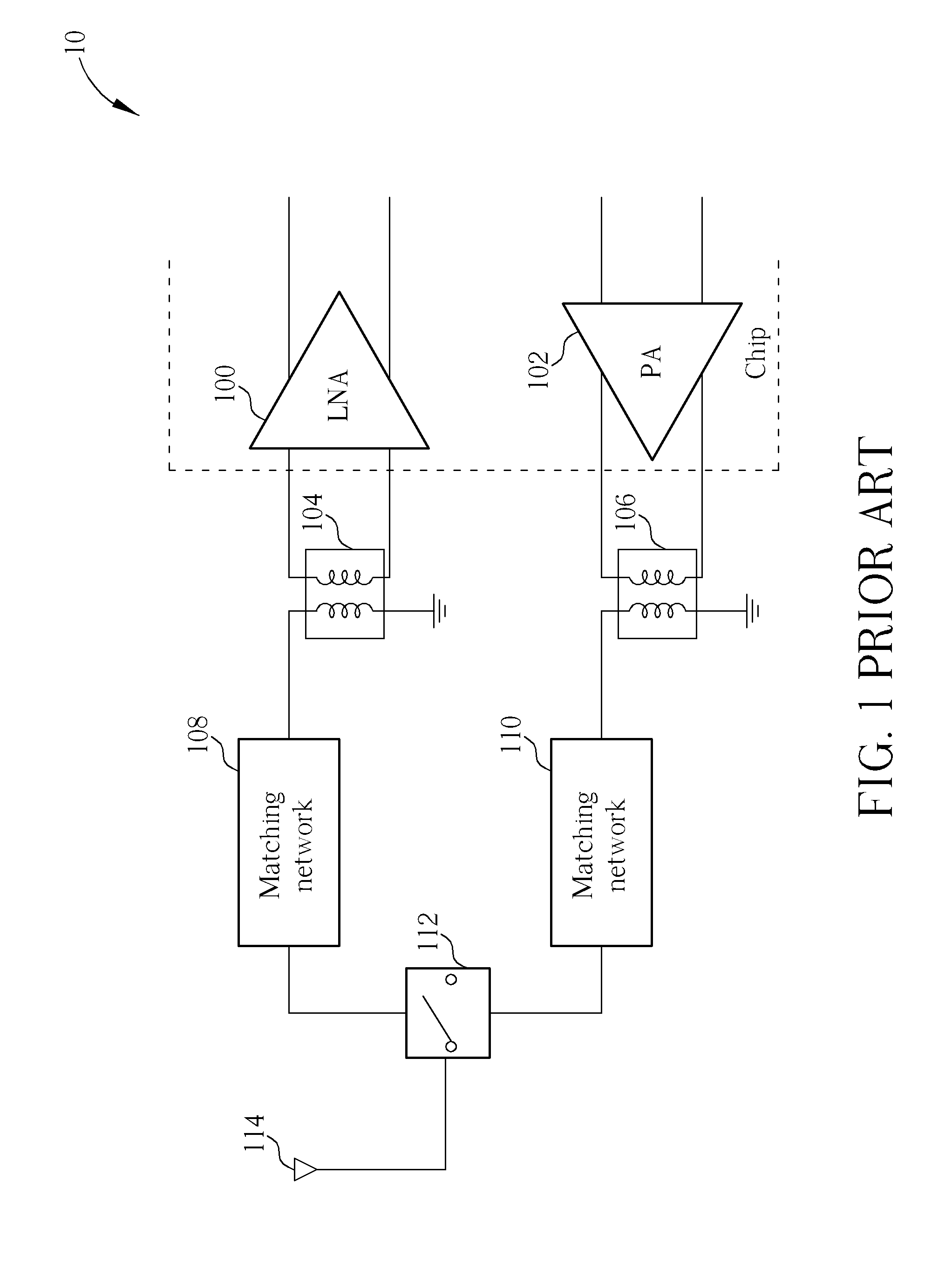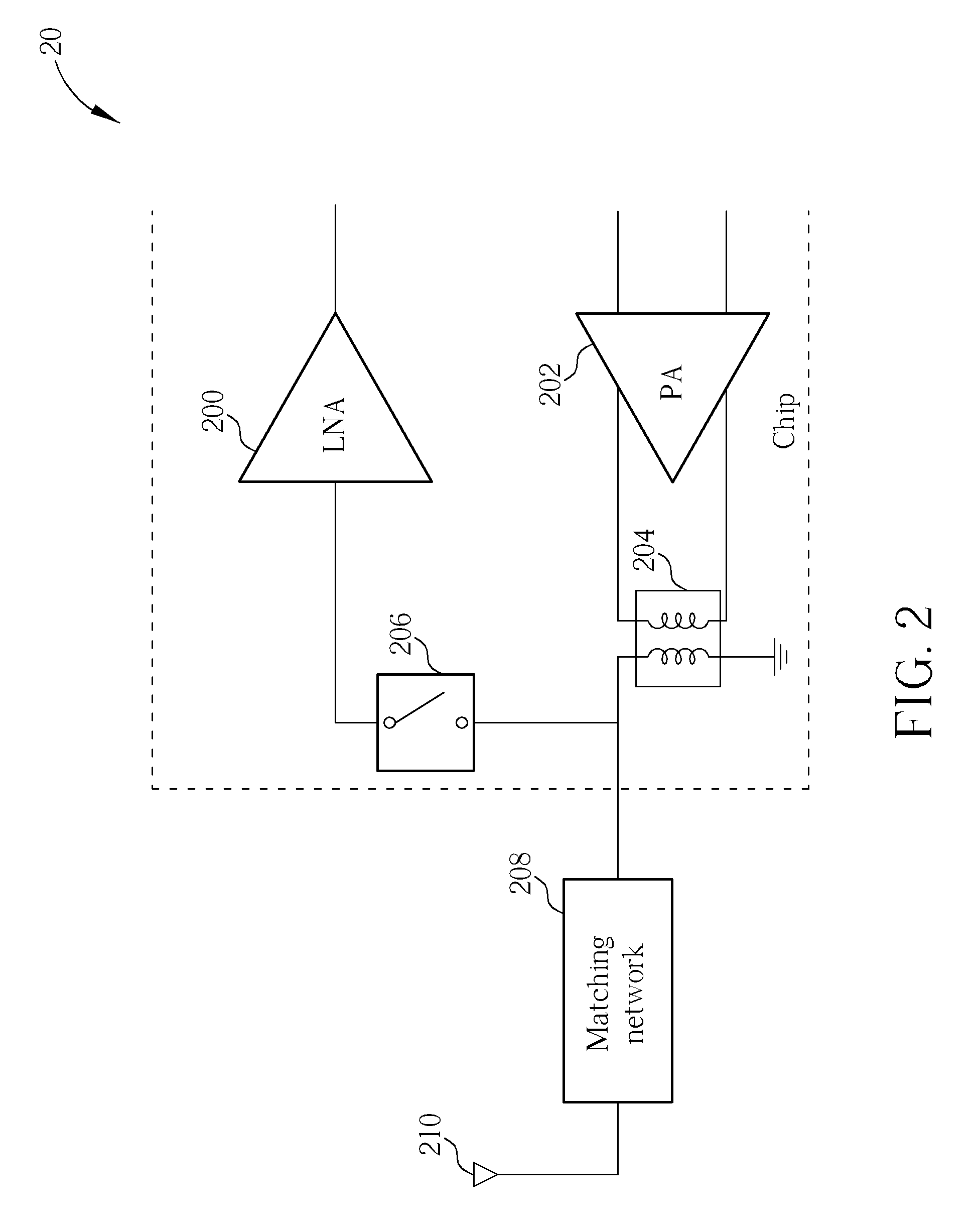Transmit-receive front end
a technology of transmitting and receiving, applied in the direction of low-noise amplifiers, waveguide type devices, amplifier combinations, etc., can solve the problems of sacrificing rf performance, requiring more cost and larger size on the pcb board, and lna signal loss, etc., to eliminate power loss of pa, enhance isolation from power amplifiers, and eliminate lna signal loss
- Summary
- Abstract
- Description
- Claims
- Application Information
AI Technical Summary
Benefits of technology
Problems solved by technology
Method used
Image
Examples
Embodiment Construction
[0015]Please refer to FIG. 2, which is a schematic diagram of a transmit-receive (TR) front end 20 according to an embodiment of the present invention. As shown in FIG. 2, the TR front end 20 includes a low-noise amplifier (LNA) 200, a differential power amplifier (PA) 202, a transformer 204, a matching network 208 and an antenna 210, wherein the LNA 200, the differential PA 202 and the transformer 204 are on-chip and the matching network 208 and the antenna 210 are off-chip. As a result, most components of the TR front end 20 are on-chip, which achieves compact size, low cost and less required pins, i.e. from 4 pins to 1 pin, and are properly designed to reduce power loss of the PA 202 and signal loss of the LNA 200.
[0016]Main differences between the TR front end 20 and the TR front end 10 are that the LNA 200 is single ended and there is no transformer between the LNA 200 and the TR switch 206, the TR switch 206 is an asymmetric 2 series switches in the LNA side and thus not in a ...
PUM
 Login to View More
Login to View More Abstract
Description
Claims
Application Information
 Login to View More
Login to View More - R&D
- Intellectual Property
- Life Sciences
- Materials
- Tech Scout
- Unparalleled Data Quality
- Higher Quality Content
- 60% Fewer Hallucinations
Browse by: Latest US Patents, China's latest patents, Technical Efficacy Thesaurus, Application Domain, Technology Topic, Popular Technical Reports.
© 2025 PatSnap. All rights reserved.Legal|Privacy policy|Modern Slavery Act Transparency Statement|Sitemap|About US| Contact US: help@patsnap.com



